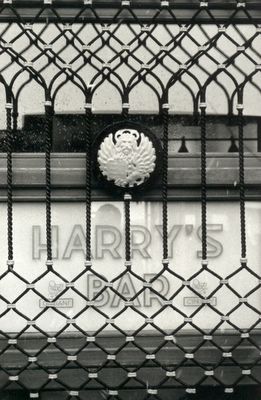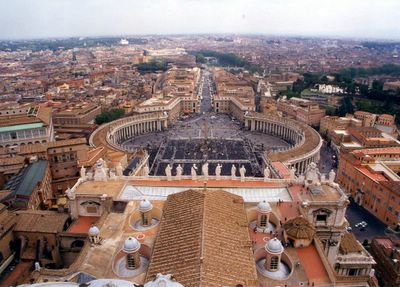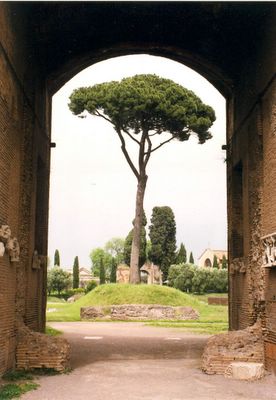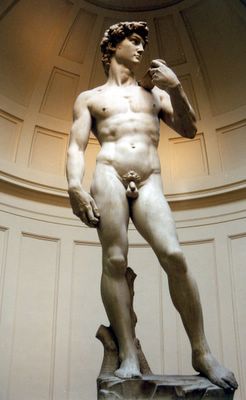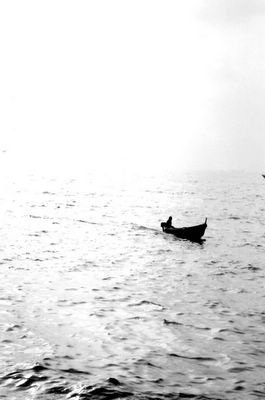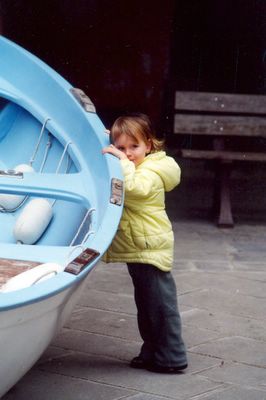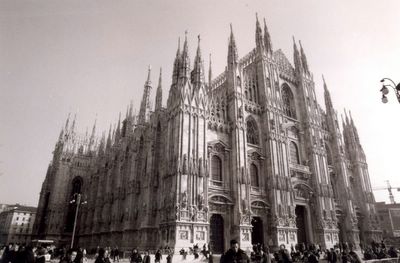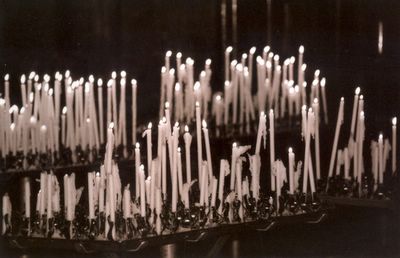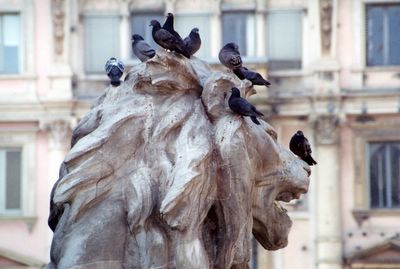SICILY
Click on an image for a larger size
NOTE: I lived in Sicily for three years, compliments of the U.S. Navy. They were some of the greatest years of my life as I'm sure these pictures will show. These are but a tip of the iceburg...

Dinner one evening as seen from my balcony, Motta St. Anastasia, Sicily.
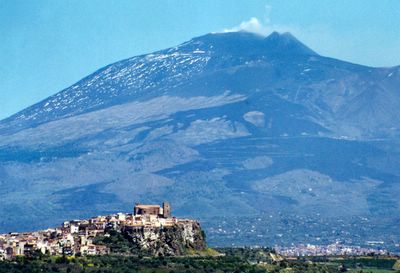
The town of Motta St. Anastasia, built atop a molton palisade beneath the shadow of Mt. Etna, seen smoking in the background. This would be my home for three years.
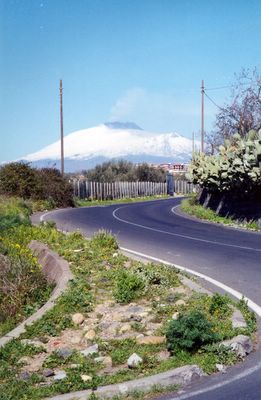
The road to Motta, Sicily.
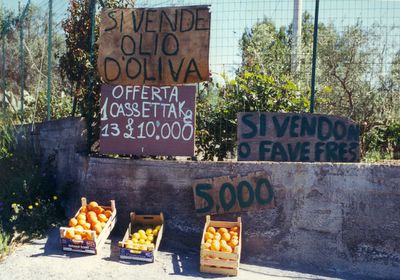
Fruit sold on the side of the road.
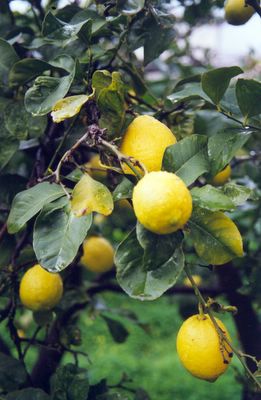
Lemons growing in my backyard.

Oranges growing in my backyard.
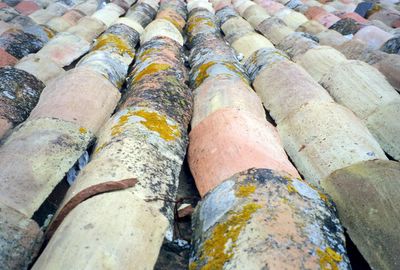
Sicilian roof tiles.
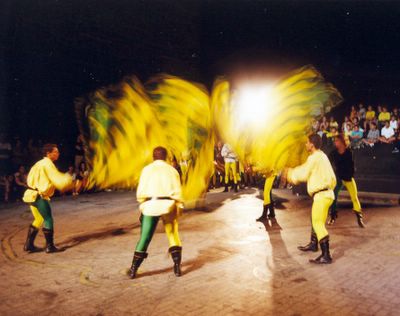
Flag-throwers at a Motta Middle-Age fair.
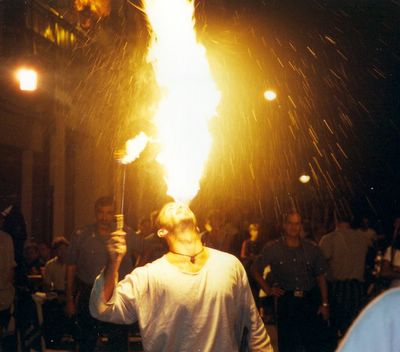
Fire-eater at one of the island's many festivals.
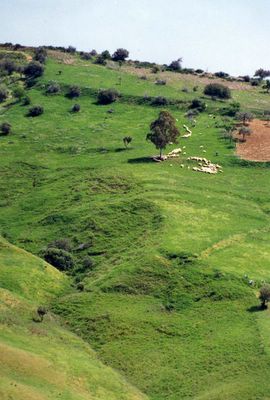
"Geep" (mixed herds of goats and sheep) graze on a hillside outside Motta St. Anastasia.
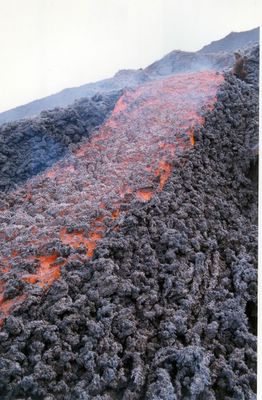
When I was told that I would be living at the base of Mt. Etna, Europe's most active volcano, I had no idea that I would be treated to nightly displays of exploding lava and coursing rivers of magma.

Mt. Etna releases a smoke ring!
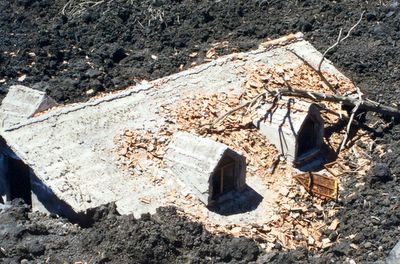
Someone didn't pay attention to the whole "Europe's most active volcano" thing.

Mt. Etna rises above the clouds.
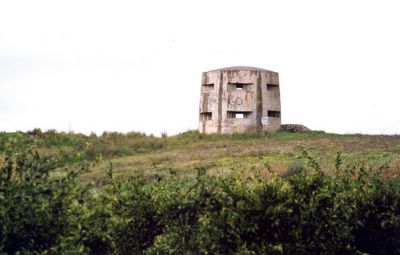
One of hundreds of Nazi pill-boxes that still dot the island to defend against the American and British invasions of WWII.

Mounted on a basalt rock, this Norman fortress lends its name to the town of Aci Castello.

The Aci Trezza rocks as seen from the Aci Castelo fortress. These are the rocks which, according to Homer, were hurled into the sea after the fleeing Ulysses by the blinded cyclops, Polyphemus.
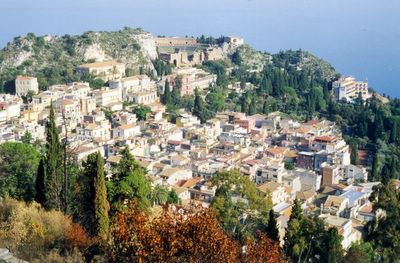
Built on a bluff above the Ionian Sea, Toarmina is Sicily's most famous tourist resort city. Note the Greek theatre.
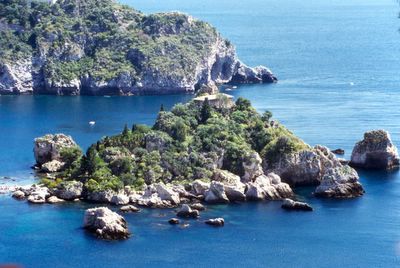
An island home outside Taormina, rumored to once belong to Sofia Loren. I used it as a snorkling base.

Lovers chat beneath the shadow of a grove of Taormina trees.
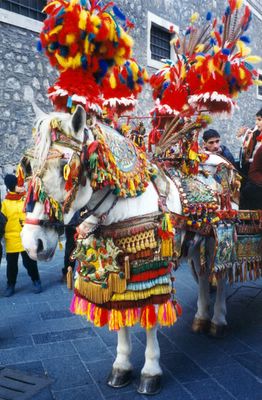
A typical Sicilian decorated horse and cart.
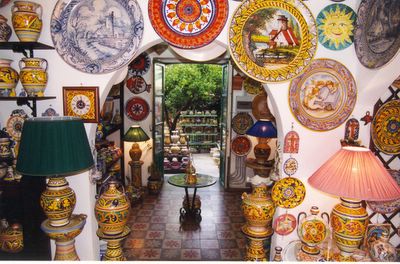
Ceramics shop in Caltagirone, Sicily.
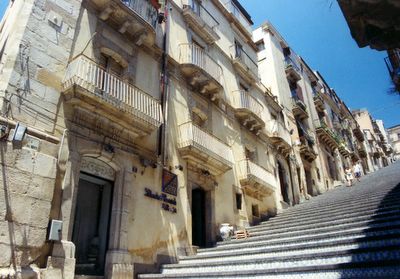
Built in 1608 to link the Cathedral with the town center, these 142 tiled steps are one of Caltagirone's most impressive attractions.
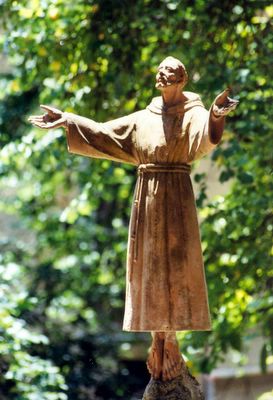
A peice of church statuary in Caltagirone, Sicily.
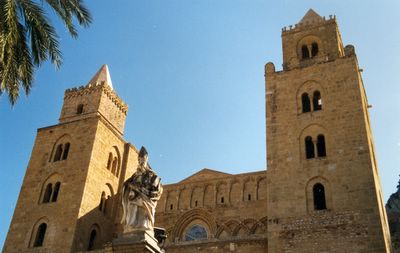
Cefalu's beautiful Norman Cathedral dates back to the 12th century.
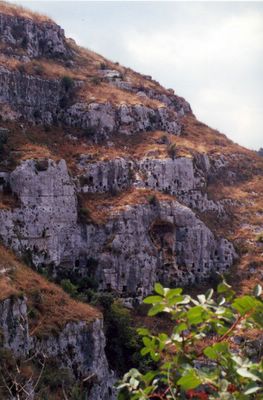
The largest necropolis in Sicily, Pantalica's thousands of rock cut tombs, dwellings, and temples (look closely) are a product of the Medieval locals hiding from Arab invaders.
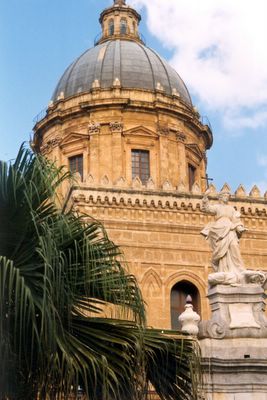
The Cathedral in Palermo, Sicily's capital city.

With better preserved Greek temples than Greece itself, Agrigento's Valley of temples (this one is the Temple of Concord) dates back to the 5th century.

A house-front in Syracuse, Sicily.
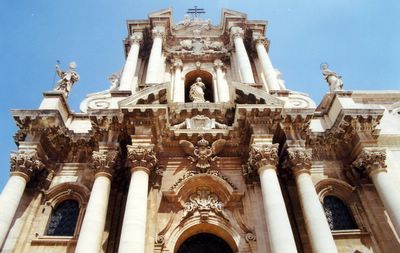
The Duomo of Syracuse, a Christian church built atop an ancient Greek temple, the massive pillers of which are integrated into the outer north wall.
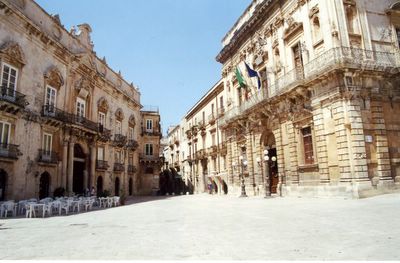
Syracuse's town center, Sicily.
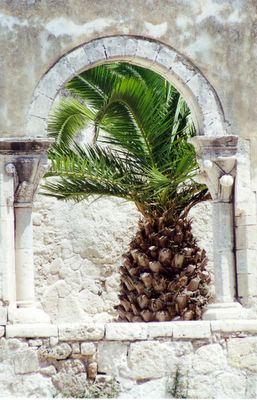
Detail at the church of St. John, beneath which are the catacombs where St. Paul spoke on his missionary journey through Syracuse.
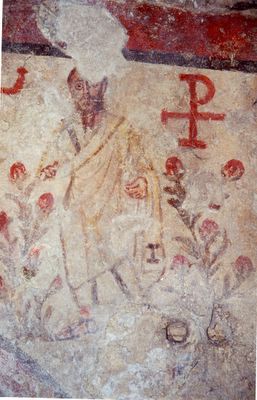
Ancient Christian art still adorns the walls of Syracuse's catacombs.
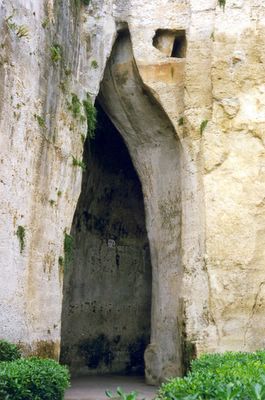
The entrance to the Ear of Dionysius, a quarry carved entirely by slave labor. The pick axe marks still scar the walls. The tyrant Dionysius used to put his most dangerous prisoners here, because the acoustics inside the quarry allowed him to hear their every whisper.

Sicilian sunset.
NOTE: I lived in Sicily for three years, compliments of the U.S. Navy. They were some of the greatest years of my life as I'm sure these pictures will show. These are but a tip of the iceburg...

Dinner one evening as seen from my balcony, Motta St. Anastasia, Sicily.

The town of Motta St. Anastasia, built atop a molton palisade beneath the shadow of Mt. Etna, seen smoking in the background. This would be my home for three years.

The road to Motta, Sicily.

Fruit sold on the side of the road.

Lemons growing in my backyard.

Oranges growing in my backyard.

Sicilian roof tiles.

Flag-throwers at a Motta Middle-Age fair.

Fire-eater at one of the island's many festivals.

"Geep" (mixed herds of goats and sheep) graze on a hillside outside Motta St. Anastasia.

When I was told that I would be living at the base of Mt. Etna, Europe's most active volcano, I had no idea that I would be treated to nightly displays of exploding lava and coursing rivers of magma.

Mt. Etna releases a smoke ring!

Someone didn't pay attention to the whole "Europe's most active volcano" thing.

Mt. Etna rises above the clouds.

One of hundreds of Nazi pill-boxes that still dot the island to defend against the American and British invasions of WWII.

Mounted on a basalt rock, this Norman fortress lends its name to the town of Aci Castello.

The Aci Trezza rocks as seen from the Aci Castelo fortress. These are the rocks which, according to Homer, were hurled into the sea after the fleeing Ulysses by the blinded cyclops, Polyphemus.

Built on a bluff above the Ionian Sea, Toarmina is Sicily's most famous tourist resort city. Note the Greek theatre.

An island home outside Taormina, rumored to once belong to Sofia Loren. I used it as a snorkling base.

Lovers chat beneath the shadow of a grove of Taormina trees.

A typical Sicilian decorated horse and cart.

Ceramics shop in Caltagirone, Sicily.

Built in 1608 to link the Cathedral with the town center, these 142 tiled steps are one of Caltagirone's most impressive attractions.

A peice of church statuary in Caltagirone, Sicily.

Cefalu's beautiful Norman Cathedral dates back to the 12th century.

The largest necropolis in Sicily, Pantalica's thousands of rock cut tombs, dwellings, and temples (look closely) are a product of the Medieval locals hiding from Arab invaders.

The Cathedral in Palermo, Sicily's capital city.

With better preserved Greek temples than Greece itself, Agrigento's Valley of temples (this one is the Temple of Concord) dates back to the 5th century.

A house-front in Syracuse, Sicily.

The Duomo of Syracuse, a Christian church built atop an ancient Greek temple, the massive pillers of which are integrated into the outer north wall.

Syracuse's town center, Sicily.

Detail at the church of St. John, beneath which are the catacombs where St. Paul spoke on his missionary journey through Syracuse.

Ancient Christian art still adorns the walls of Syracuse's catacombs.

The entrance to the Ear of Dionysius, a quarry carved entirely by slave labor. The pick axe marks still scar the walls. The tyrant Dionysius used to put his most dangerous prisoners here, because the acoustics inside the quarry allowed him to hear their every whisper.

Sicilian sunset.









